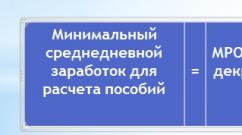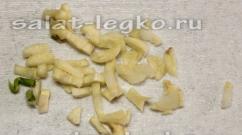First aid for frostbite point by point. Methods for providing effective first aid for frostbite
First aid actions vary depending on the degree of frostbite, the presence of general cooling of the body, age and concomitant diseases.
First aid consists of stopping the cooling, warming the extremities, restoring blood circulation in cold-affected tissues and preventing the development of infection. The first thing to do if there are signs of frostbite is to take the victim to the nearest warm room, remove frozen shoes, socks, and gloves. At the same time as carrying out first aid measures, it is necessary to urgently call a doctor or an ambulance to provide medical assistance.
In case of frostbite of the first degree, the cooled areas should be warmed until reddened with warm hands, light massage, rubbing with a woolen cloth, breathing, and then apply a cotton-gauze bandage.
In case of frostbite of II-IV degree, rapid warming, massage or rubbing should not be done. Apply a heat-insulating bandage to the affected surface (a layer of gauze, a thick layer of cotton wool, another layer of gauze, and an oilcloth or rubberized fabric on top). The affected limbs are fixed using available means (a board, a piece of plywood, thick cardboard), applying and bandaging them over the bandage. You can use improvised material as heat insulating material.
The victims are given a hot drink, food, a tablet of aspirin, analgin, 2 tablets of No-shpa or papaverine.
It is not recommended to rub patients with snow, since the blood vessels of the hands and feet are very fragile and therefore may be damaged, and the resulting micro-abrasions on the skin contribute to infection. You should not use quick warming of frostbitten limbs by the fire, or uncontrolled use of heating pads and similar heat sources, as this worsens the course of frostbite. An unacceptable and ineffective first aid option is rubbing oils, fats, rubbing alcohol into tissues for deep frostbite.
With general mild cooling, it is sufficient effective method is to warm the victim in a warm bath at an initial water temperature of 24 o C, which is raised to normal body temperature.
With moderate and severe degrees of general cooling with impaired breathing and circulation, the victim must be taken to the hospital as soon as possible.
II. Cardiopulmonary resuscitation
2.1. Diagnostics of terminal conditions
The terminal state refers to the stages of the dying of the organism, when, due to the influence of various pathological processes, the coordinated activity of the vital functions of organs and systems that maintain homeostasis is sharply inhibited. At this moment, the compensatory mechanisms are sharply depleted or have a damaging effect, and without special treatment the body is not able to independently cope with the disturbances that have arisen.
Causes of terminal conditions: acute blood loss, severe massive trauma, acute poisoning, exposure to low and high temperatures, impaired airway patency (asphyxia during drowning, hanging, aspiration of foreign bodies, severe bronchospasm or laryngospasm), pulmonary embolism, damage to the heart muscle, accumulation of fluid and blood in the pericardium, impaired gas exchange during hemo- and pneumothorax, chest compression, water -electrolyte disorders, allergic and bacterial shock, coma, etc.
It is customary to distinguish the following types of terminal conditions:
1. pregonal state, terminal pause,
2. agonal state,
3. clinical death.
When the body dies relatively slowly, clinical death is usually preceded by pre-agony and agony.
In a preagonal state there is a sharp lethargy and confusion, blood pressure is not determined (sometimes you can detect sluggish pulsation in the carotid arteries), breathing becomes shallow, frequent or rare, skin color changes (cyanosis increases or pallor develops). Blood pressure drops to zero.
Terminal pause characterized by short-term cessation of breathing and bioelectrical activity of the heart. It is mainly observed during acute blood loss. In drowning and other types of asphyxia, the terminal pause does not occur. It should be noted that the sequence of dying processes is determined by the nature of damage to the brain, heart and respiratory dysfunction. Thus, with primary damage to the heart, heart failure progresses, then its activity sharply weakens or stops, and subsequently the function of breathing and the central nervous system fades away. The opposite picture is observed, for example, with mechanical asphyxia and primary brain damage: cardiac activity stops after the respiratory function fades.
It is fundamentally important to know that when blood circulation in the body stops, when the activity of the heart stops, the brain can still perform its functions for some time, and then deep disturbances occur in it.
Agonal state determined by activation of the reticular formation and autonomic centers of the medulla oblongata. During this period, a short-term increase in blood pressure up to 15-20 mm Hg is possible. Art., increased heart rate, increased breathing (deep, rare breathing, with the participation of auxiliary muscles, with an open mouth).
Clinical death. It ends with a short-term agonal outbreak; it is characterized by a complete cessation of blood circulation and breathing, but irreversible changes in the main part of the brain cells have not yet occurred.
The dysfunction of brain cells is reversible when blood circulation is restored within 3-6 minutes at an ambient temperature of 15-20 0 C, and in some cases with significant cooling (drowning under ice) after 10-15 minutes.
First of all, cells of the cerebral cortex die (decortication), later - other parts of the nervous system (decerebration or brain death).
Biological death. Occurs 5-6 minutes after clinical death, when irreversible changes occur in the cerebral cortex and the body as a whole.
Diagnosis of clinical death is not difficult and usually takes a few seconds. The diagnosis is made based on the following signs:
1. Loss of consciousness. Typically, loss of consciousness occurs 10-15 seconds after circulatory arrest. Long-term preservation of consciousness excludes cessation of blood circulation!
2. Absence of pulse in the carotid arteries. It speaks of a cessation of blood flow through these arteries, which leads to rapid bleeding of the brain and death of cells in the cerebral cortex. It is necessary to determine the pulsation for at least 10 seconds so as not to miss pronounced bradycardia. Extending the patient's neck makes it easier to determine the pulsation.
3. Lack of spontaneous breathing or presence of agonal breathing. The presence of this sign is established by external examination of the affected person and in the vast majority of cases does not cause any difficulty. Agonal breathing is characterized by periodic convulsive contractions of the neck and respiratory muscles. However, since the inhalation and exhalation muscles simultaneously contract, ventilation of the lungs does not occur. If you don't start at this moment artificial ventilation lungs, agonal breathing in a few seconds will turn into apnea - complete cessation of breathing.
4. Dilation of the pupils due to cessation of blood flow through the nerve centers - the nuclei of the oculomotor nerves.
Attempts to measure blood pressure, determine pulsation in peripheral vessels, and listen to heart sounds should under no circumstances be used to diagnose clinical death. You should not be afraid to start CPR “prematurely”, before an absolutely accurate diagnosis of clinical death has been established. In the absence of external signs of vital activity, doubts about the presence of heartbeats should indicate in favor of initiating CPR, since in some cases heartbeats may persist, but be either very rare or completely ineffective. In both cases, the blood flow through the vessels of the brain suffers so much that irreversible changes in the cerebral cortex and in the myocardium will not slow down. Somewhat “premature” CPR in cases of circulatory inefficiency can help stabilize and improve the condition of the affected person.
a) to establish the absence of consciousness - carefully shake or shout out to the supposedly affected person;
b) make sure there is no breathing;
c) place one hand on the carotid artery, and with the other lift the upper eyelid, thus simultaneously checking the condition of the pupil and the presence or absence of a pulse.
A person for whom CPR is not a profession is subjected to a strong psycho-emotional impact when he is unexpectedly faced with the need to provide assistance to someone who has suddenly died. Excitement prevents the resuscitator from correctly assessing the situation and immediately charting the sequence of his actions. Strict adherence to the recommended sequence of resuscitation techniques (CPR algorithm) allows you to cope with this problem. We will consider this sequence a little lower, but for now we will present some general provisions of CPR.
1. Resuscitation measures are immediately started by the one who was first in close proximity to the victim. CPR must be started immediately while attempting to call for help by voice. If there are at least two resuscitators, one of them begins CPR, and the second takes upon himself the call for specialized assistance and then becomes involved in CPR.
2. Resuscitation measures are provided in the place where the victim is found. You should not try to move the victim to a suitable room, specially place him on a couch, etc.
3. Cardiac massage can and should be performed without preliminary differential diagnosis of the mechanisms of cessation of blood circulation (asystole, fibrillation, ineffective cardiac activity).
These activities do not require the presence of special devices and means to provide assistance at the disaster site and should be carried out in any conditions using available materials.
Thus, with a sudden cessation of blood circulation and cessation of breathing, a reversible stage of “dying” begins (“terminal state” or “imaginary death” - the transition period between life and death).
CPR is regulated by certain laws and regulations.
Regulatory medical documents.
“Instructions for determining the criteria and procedure for determining the moment death of a person, cessation of resuscitation measures” of the Ministry of Health of the Russian Federation No. 73 of 03/04/2003;
“Instructions for ascertaining the death of a person on the basis of brain death” (order of the Ministry of Health of the Russian Federation No. 460 of December 20, 2001);
Law “On the fundamentals of protecting the health of citizens in the Russian Federation” (No. 323 of November 21, 2011);
Order “On First Medical Aid” of the Ministry of Health of the Russian Federation No. 353n dated May 17, 2010.
These documents determine the volume and time of resuscitation measures and for whom they are not indicated.
Scope of resuscitation measures.
Resuscitation is not provided:
In the presence of signs of biological death: hypostatic spots ("cadaveric spots") on the skin - primarily of the face, neck, chest area and then throughout the body, rigor mortis of the muscles, glazing and drying of the eyeball, "cat's" eye.
When a state of clinical death occurs against the background of progression of reliably established incurable diseases (last stages in cancer patients, etc.) or incurable consequences of acute injury incompatible with life.
Resuscitation should be stopped when the full range of resuscitation measures is carried out:
If circulatory arrest is not eliminated within 30 minutes or more;
When a person is declared dead on the basis of brain death, including against the background of ineffective use of the full range of resuscitation measures;
If during cardiopulmonary resuscitation it turns out that it is not indicated for the patient.
Criteria for the effectiveness of CPR.
Pinking of the skin and mucous membranes (preferably pink border of the lips).
The appearance of a pulse in the central arteries.
Constriction of the pupils and the appearance of their reaction to light (restoration of brain stem function).
The appearance of spontaneous breathing.
Stages of resuscitation correspond to the English alphabet (according to P. Safar).
Contents of the article: classList.toggle()">toggle
Frostbite is a common consequence of negative exposure low temperatures on various soft tissues of the human body.
In the vast majority of cases, it occurs in the winter, and the most delicate protruding parts of the body are affected - fingers on the limbs, ears, nose, face, i.e. elements that are not sufficiently protected from external environmental factors.
What are the types and signs of frostbite? What to do when this negative process is identified? When is it necessary to see a doctor? Thus, in the article you will learn everything about providing first aid for frostbite or frostbite.
Degrees and signs of frostbite
The characteristic manifestations of frostbite depend significantly on both the general level of low temperature and the duration of its effect on parts of the body. IN modern medicine Several gradations of degrees of cold tissue damage are used, and the signs of this process vary accordingly.
General classification includes:
You can read more about the classification of frostbite.
In addition, doctors note differences in the mechanisms of development of frostbite, which are formed either by direct contact or after exposure to cold air currents.
Also, there is a division into the degree of general frostbite with characteristic symptoms:
- Lung. Pale skin is complemented by general chills, a slow pulse to 60 beats per minute, and local frostbite of soft tissues of 1 or 2 degrees. Speech difficulties and lethargy are less commonly diagnosed. Breathing and blood pressure in this case remains stable;
- Average. It is characterized by “blueness” of the skin, a slowing of the pulse to 50 beats per minute, a slight drop in blood pressure, and a pathological change in breathing - it becomes rare (about 9-10 breaths and exhalations per minute) and shallow. Local frostbite is more extensive, most often 2 or 3 degrees of depth of damage. Often, in patients with moderate frostbite, consciousness is depressed, persistent drowsiness occurs, the pupils react poorly to light stimuli, and the overall body temperature drops to 32 degrees Celsius;
- Heavy. Soft tissues and skin in the affected areas acquire a deep blue, closer to black color, sometimes with a marble tint. The pulse is palpable poorly and does not exceed 36 beats per minute, and blood pressure decreases significantly. The patient's breathing is weak, shallow, no more than 3-4 inhalations and exhalations per minute. The general body temperature drops to 31 degrees Celsius and below, consciousness is usually absent, convulsions often run through the body, and involuntary vomiting often occurs. Frostbite of soft tissues is deep, widespread over wide areas, up to complete glaciation.
The main method of symptomatic classification of signs of frostbite, taking into account the above criteria, is gradation according to the depth of damage to soft tissues.
- 1st degree. In this case, the affected areas have a whitish, sometimes marbled color, which, after warming, changes to severe redness. Swelling is insignificant, there are no signs of external damage to the skin. During the recovery process, which usually takes 5-6 days, the patient feels mild pain, itching, burning, the epithelium peels off and tingles;
- 2nd degree. The skin in the localized areas acquires a deeper bluish tint, and small bubbles are formed on the surface of the epithelium, filled with a transparent liquid consistency similar to blisters. Pain syndrome of moderate severity is accompanied during frostbite by severe skin itching and burning, and the frostbite sites themselves are restored within a few weeks;
- 3rd degree. The skin has a deep bluish tint, larger bubbles form on the epithelium, the internal contents of which contain blood impurities. In 1-2 days after frostbite, the sensitivity of the affected areas is completely lost, partial death of the upper layers of the skin occurs, in place of which granulations and scars begin to form. Horny plates of fingers of extremities subjected to negative influence, are partially deformed. The recovery process takes up to 1 month and is accompanied by severe pain; often a person requires plastic surgery after conservative therapy;
- 4th degree. Formed at very low temperatures and prolonged contact exposure to the affected area. In addition to the skin, soft tissues, sometimes even cartilage, joints and bones, are also subject to destruction. The external color of the epithelium is almost black, combined with dark blue and marble tint localizations (in places with a lower degree of lesion depth). During the process of warming, extensive swelling immediately forms, quickly growing in size, while tissue sensitivity to contact does not return. In the vast majority of cases, conservative therapy methods alone cannot be used; classical surgery is necessary.
First aid for different degrees of frostbite
It should be noted that first aid for frostbite is a complex emergency measures to prevent the development of complications of this negative process or to save the life of the victim and cannot replace a fully qualified medical treatment. Regardless of the degree of frostbite, after rewarming it is necessary to contact the attending physician, who will refer the patient for diagnosis and prescribe the necessary therapy based on vital signs.
Let's consider what first aid should be provided for frostbite or frostbite of varying degrees.
Related articles 
1st degree frostbite
Does not pose a threat to the life of the victim if first aid is provided in a timely manner. The list of basic first steps in case of frostbite usually includes:
- Stop contact with the cold and move the person indoors. It is extremely undesirable to carry out warming procedures in the cold, so the main primary task is to transport the person to a dry and warm place. In the absence of such an opportunity (for example, staying on an ice floe and the impossibility of a quick transfer), it is necessary to light a fire and stay at some distance from it in order to feel the warmth (but not heat, quick warming cannot be carried out);
- Change of clothes. If possible, you need to change wet, cold or frozen clothes to dry ones, even before getting into the heat, otherwise the activities are carried out at home or in another room, isolated from external weather factors;
- Warming. The procedure for warming limbs and small areas can be carried out by massaging the affected areas in warm conditions until the skin turns red. An alternative is intensive breathing on localization, light rubbing with a natural woolen cloth. If frostbite of the 1st degree is accompanied by hypothermia, then it is rational to take a warm bath - water at a temperature of about 25 degrees is poured into it, and after placing a person there, this level is gradually increased to 40 degrees over 1 hour;
- Bandage. After all the measures described above, a classic cotton-gauze bandage is applied to the affected areas;
- Warm drink. A person can and should be given warm sweet drinks to drink - tea, compote, rosehip decoction. This procedure can be supplemented with warm food, preferably also liquid.

2-3 degree frostbite
With deeper degrees of soft tissue damage, the first aid scheme looks different - a number of points are excluded from it, due to the high risks to the patient’s health. Possible actions include:
- Plenty of warm and sweet drinks;
- Formation of a reinforced warming bandage. In addition to layers of cotton wool and gauze, one should also contain cotton fabric and a top oilcloth or rubber layer;
- Fixation of limbs. If the limbs are affected, you need to not only wrap them as tightly as possible, but also fix them with improvised means, for example, planks, wrapping them around your arms or legs with a bandage;
- Medications. If a person is conscious and his swallowing reflex is preserved, then you can use some available drugs - antispasmodics (relieving spasms of the periphery of blood vessels, typical representatives - drotaverine, papaverine), NSAIDs (weakening the inflammatory process and relieving pain syndrome, typical representatives are aspirin, ketorolac, nimesulide), antihistamines (weakening the autoimmune reaction to frostbite, typical representatives are clemastine, suprastin, zyrtec), vitamins (vitamin C in a dosage of 1 thousand milligrams strengthens blood vessels and counteracts their destruction);
- Call an ambulance. In case of frostbite, it is imperative to call an ambulance to transport the victim to a hospital.
4th degree frostbite
In the most advanced stage of frostbite, a person is often unconscious, his basic reflexes are impaired, his body is significantly hypothermic, his pulse and breathing are practically absent, and the degree of damage to soft tissues is extremely high. All of the above first aid techniques are prohibited in this situation - the only way to help the victim is to transport him to the hospital as quickly as possible.
If the medical team's car is not nearby, then it is necessary to deliver the person on our own, for example, in a personal car, preventing the affected areas from thawing (they need to be insulated as tightly as possible from heat) - only in a hospital setting can a patient receive intensive resuscitation care and immediate surgical intervention was performed.
Now you know how to provide first aid for frostbite, but it is also important what not to do in such a situation.
What not to do if you have frostbite
When providing first aid to a victim, avoid actions that could harm the person!
- Rubbing with snow. Prohibited for any degree of frostbite due to the high likelihood of vascular damage and the development of sepsis;
- Use of oils, fat, alcohol for external coverings. The above components are not effective, moreover, they will interfere with the intensive care in a hospital setting;
- Drinking alcohol. Alcohol in any form dilates blood vessels and increases heat transfer, which causes a deterioration in the patient’s condition;
- Massage with hands or woolen fabrics. Can only be used in the first stage of frostbite, but is prohibited in stages 2-4;
- Fast warming. After frostbite, a person must restore their thermal balance gradually - using heating pads, hot water, or heating over an open fire creates significant risks of developing complications and tissue necrosis;
- Ignoring the problem. Even mild frostbite cannot be ignored! After taking the necessary measures, it is advisable to visit a doctor;
- Self-appointment systemic drugs. Only analgesics, antihistamines, vitamin C and antispasmodics can be used as one of the first aid remedies. Medicines systemic action (antiplatelet agents, antibiotics, corticosteroids, anticoagulants, etc.) can only be prescribed by a professional doctor for health reasons.
When to see a doctor
Ideally, even with the most mild stage frostbite after undergoing the warming procedure, it is advisable to see a therapist who will diagnose the patient’s condition and adjust the further course of treatment. It is imperative to immediately seek qualified medical help in the following cases:

Features of frostbite in children
Children quite often suffer from frostbite, especially in winter. Active, long-term games in the fresh air provoke no less intense sweating - underwear and clothes get wet, which creates additional risks of both hypothermia and frostbite.
As modern medical statistics show, the child’s limbs with fingers and head most often suffer from frostbite.
Wet gloves, the absence of a hat on the head, constant exposure to snow and other factors provoke the rapid development of mild forms of frostbite - 2,3 and even more so 4 degrees of pathology, and systemic frostbite of the entire body is very rarely diagnosed at this age.

In addition, children more often than adults experience the so-called cold dermatitis, or popularly “fever” - it has chronic form and accompanies the younger generation throughout the entire autumn-winter period. The pathology is often associated with anemia and vitamin deficiencies characteristic of this age category people.
The first signs of mild stages of frostbite in children are pale skin(up to cyanosis), lack of normal tactile sensations when touching the epithelium, general lethargy, some difficulty speaking, chills, involuntary trembling and blue lips, slight swelling. With a more serious lesion, the formation of hemorrhagic blisters in the affected areas, pronounced “cyanosis” of soft tissues with a marble tint and other unpleasant manifestations are possible.
First aid for frostbite in a child:
- Bring your child home immediately;
- Remove all wet and cold clothes from him, giving him dry and warm clothes instead;
- In case of mild frostbite, place the child in a bath with warm water (temperature about 30 degrees), then gradually increase the temperature over half an hour to 40 degrees. At the same time, lightly massage the partially frostbitten areas, starting from the extreme areas until the soft tissues acquire pronounced redness and complete restoration of blood circulation;
- Dry the child, place him under 2 blankets, and put a cotton-gauze bandage on the affected area, giving him a warm and sweet drink (for example, tea) in bed;
- If blisters appear, prolonged insensitivity of the skin and other manifestations of stages 2-4 of frostbite, call an ambulance immediately.
Now you know everything about the rules for providing first aid to a victim of frostbite or frostbite.
Walking in the fresh air in the cold, contemplating the beauty of winter nature does not always bring pleasure and enjoyment. This is often accompanied by very unpleasant phenomena, one of which is frostbite - the effect of adverse weather conditions on exposed areas of the body, which leads to tissue damage. It occurs primarily not as a result of exposure to frost, but due to a violation of blood microcirculation. This happens under the influence of several factors: sub-zero air temperature (or high air humidity and strong wind); narrowing of blood vessels in the cold, poor circulation in certain areas of the body or skin; death of tissue cells or organs that do not receive enough blood. Such processes in the body lead to very sad consequences, so in order to prevent them, it is important to provide first aid in a timely manner.

Symptoms and signs of frostbite depend on the area affected:
- Ears. Failure to follow basic recommendations for using headwear in winter can lead to frostbite in the ears. This process is accompanied by severe redness of the skin in these areas, a feeling of pain and discomfort.
- Face. The main symptom is a tingling sensation in the nose and a burning sensation on the cheeks. When the first signs appear, you should rub your face with your hands (do not use wet gloves, snow or rough fabrics) and cover it with a scarf or cover yourself with a hood.
- Hands. This area of the body is most often susceptible to frostbite, which can occur even when using mittens (if they are not warm enough or get wet during a walk). If the first signs appear (burning in the fingers, numbness), you should perform simple physical exercise- clench and unclench your fists, rub your hands, the main thing is to prevent them from becoming numb.
- Legs. Frostbite of the lower extremities most often occurs due to excessively tight shoes, which impair blood circulation in the tissues. Wet boots can also lead to an unpleasant phenomenon. It is extremely important to choose the right shoes for the winter: they should be spacious, warm and very comfortable.

In order to provide qualified first aid for frostbite, it is worth knowing the extent of its development:
- I degree. It occurs as a result of a short stay in the cold and the main symptoms are: burning, tingling of the frostbitten area of the skin, pallor of the skin. Complete recovery will take several days, during which redness and peeling of the damaged areas of the body will be observed.
- II degree. This stage is characterized by loss of sensitivity in an area of the skin or limb. After warming up they intensify painful sensations, itching appears, bubbles filled with clear liquid appear on the surface, which burst over time. It will take at least two weeks for complete recovery.
- III degree. They are characterized by similar symptoms, but they are more pronounced and the pain is stronger. The blisters that appear on the frostbitten area of the skin are filled with bloody fluid, and after their destruction, scars remain. People with third degree frostbite will need approximately one month to get rid of the consequences and return to their normal lives.
- IV degree. It is considered the most dangerous because it leads to very complex consequences: not only the death of skin cells is observed, but also internal organs, bones. After warming up, the frostbitten area swells and becomes bluish in color. This degree is dangerous not only for health, but also for life, so it is important to start proper treatment in a timely manner.
In order to provide first aid to a person with frostbite, it is important to find out several nuances:
- What part of the body or area of skin was damaged?
- Degree of frostbite.
- The conditions under which the victim was located for the last few hours.
- The general condition of a person, his well-being and sensations.
Regardless of the factors, assistance should be provided as quickly as possible - this will increase the victim’s chances of a full recovery, help maintain health, and in particularly difficult situations, life. If you find or encounter a person with frostbite, the following actions should be taken:
- Transport the patient to a warm room, warm the affected areas of the skin using blankets and warm water, the temperature of which should be increased gradually by adding hot liquid. The first sign that the body has warmed up and blood circulation has been restored is redness of the skin, the appearance pain and tingling.
- Perform a massage, rubbing the affected area with light massaging movements to restore and activate blood microcirculation.
- The next step is to apply a compress using sterile gauze in several layers. Medical professionals do not recommend using ointments of any kind - this may make it difficult to accurately determine the degree of cooling in the hospital or cause an allergic reaction, which will worsen the situation.
- Give the victim a warm drink to restore internal balance and normalize temperature.
- After providing first aid, a person with frostbite should be taken as quickly as possible to a medical facility for examination by specialists and the choice of further treatment.

Wanting to help the victim, people who provide first aid for frostbite often make various kinds of mistakes that only complicate the situation and lead to complications. It is extremely important to know what not to do in such a situation:
- Rapid warming of the frostbitten area, that is, immersion in very hot water, is strictly not recommended - this can lead to tissue death (necrosis).
- Do not rub the affected area with wet hands, snow or a very rough cloth - this can injure the already damaged skin and lead to the development of infection and inflammation.
- You can't drink alcohol.
Prevention of frostbite
Frostbite is much easier to prevent than to eliminate its consequences. For prevention, you should follow very simple and accessible recommendations:
- When going for a walk, in frosty, humid or windy weather, you should be well insulated by choosing the warmest clothes, which should be at least three layers. We must not forget about a hat, mittens and comfortable shoes.
- Lubricate exposed areas of skin with a rich cream (it is better if it contains natural oils). Do not use moisturizing or alcohol-containing cosmetics.
- It is not recommended to go outside in the cold on an empty stomach; you should definitely eat nutritious food that will provide additional energy to generate heat.
- While in the cold, you should constantly move, move your hands, and carefully wrap your face and ears.
- It is worth giving up smoking on the street, and it is also not recommended to go out into the cold while intoxicated or drink strong drinks.
- In bad winter weather, it is especially important to show sympathy and help strangers; you should not be indifferent.

Contents of the article: classList.toggle()">toggle
Frostbite is a serious problem associated with damage to soft tissues from cold exposure. In itself, the pathology can cause a lot of all kinds of complications, however, if performed incorrectly in the process of providing first aid, the negative consequences of frostbite may worsen.
What should not be done in case of frostbite, what are prohibited actions in case of frostbite? How to provide first aid correctly? What needs to be done to minimize the risks of cold injury? You will read about this and much more in our article.
Symptoms of frostbite
The symptoms of frostbite significantly depend on the stage of cold damage - the higher it is, the more pronounced the course of the problem becomes. Moreover, if initial symptoms Regardless of the depth of the cold injury, they are almost identical, then during the development of the pathology, and especially after warming up, the manifestations become more obvious.
For all stages of frostbite, the primary symptoms can be considered a burning sensation in the affected areas, numbness of individual localizations with tingling and itching of the skin. The following are the differences:
What not to do if you have frostbite
If you get frostbite, you cannot carry out the following types of activities:
- Use alcohol. The classic “folk” remedy in the form of alcoholic drinks cannot be used for frostbite. Firstly, the breakdown products of alcohol in the blood dilate blood vessels, which leads to accelerated heat loss, and in cases of serious frostbite, they have a very negative effect on cardiovascular system. Secondly, drinking alcohol temporarily causes a subjective feeling of warmth, not supported by the real physical process of heat balance, and also clouds the mind - a person is not able to adequately assess the severity of the pathology, he tends to fall asleep, which on the street in the cold can lead to complete freezing and death;
- Rub the skin. For stages 2, 3 and 4 of frostbite, it is forbidden to do a warming massage or rub the skin with a cloth to speed up blood circulation and faster warming. This method is applicable only for the first, mildest type of minor frostbite, otherwise you can damage the vessels located close to the upper layers of the epithelium and introduce a secondary bacterial infection into the body;
- Warm a person quickly. The warming process for stages 1, 2 and 3 of frostbite should be as smooth and extended as possible over time. It is prohibited to warm limbs and other parts of the body directly over a fire, to plunge the body directly into hot water, or to carry out other activities of this type. In case of serious frostbite, the procedure for rapid artificial warming causes a reverse reaction of thermoregulatory functions - due to the difference in temperatures of the external and deep layers of soft tissue, a person can immediately suffer a lot of complications, even death;
- Treat only at home. For degrees 2 and 3 frostbite, after performing first aid procedures, you need to call a doctor at home - he will assess the patient’s condition and decide on the need for outpatient therapy or hospitalization. In case of 4th degree frostbite, the victim must be immediately taken to the hospital.
Related articles 
Consequences of wrong actions
Incorrectly provided first aid can lead to a lot of consequences. negative consequences for the victim's body. Typical problems:
- Severe additional hypothermia of the body;
- Increased risks of thrombosis, renal or liver failure;
- Secondary bacterial infections that enter the body through damaged blood vessels and skin;
- General deterioration in vital signs with sharp weakening respiratory function and cardiac arrest;
- Receiving a more serious degree of cold injury with direct destruction of soft tissues;
- Increased risk of developing gangrenous processes due to non-compliance with the thermal insulation regime with 3-4 degrees of frostbite;
- Potential danger of developing sepsis with generalized inflammation of all organs and systems fed through the bloodstream;
- IN in rare cases- lethal outcome.
Proper first aid for frostbite
Below is a basic list of correct actions to provide first aid to a victim of cold injury.

You can find out more about first aid for frostbite.
In case of extreme degree 4 frostbite, up to freezing of individual parts of the body, the victim is prohibited from providing the above-described first aid procedures - he must be immediately taken to the hospital for intensive and resuscitation therapy, by ambulance or personal transport.
During transportation, it is advisable to apply a reinforced heat-insulating bandage made from available materials (layers of gauze, cotton wool, cotton fabric, polyethylene, rubber, etc.) to the affected areas to prevent premature freezing.
How to protect yourself from frostbite?
It is better not to treat the consequences of frostbite, but to prevent its occurrence! Basic preventive measures include:
- Wearing clothing exclusively for the weather, including both underwear and shoes - the latter should be loose and worn under an additional warm sock;
- Mandatory wearing of a hat and mittens. In cold weather, you need to wear a warm hat that covers your ears and most of your face, as well as mittens - moderately warm, but not restricting the movement of your fingers;
- Application of insulating cream. At any pharmacy you can purchase special products for local use, applied to unprotected parts of the body and blocking rapid heat removal in the cold;
- Normalization of nutrition and modern treatment any diseases. The body is weakened malnutrition or any diseases, both acute and chronic, poorly resists the effects of cold, which significantly increases the risk of frostbite and hypothermia;
- Active movements. You can't be passive in the cold! Move more while doing forward movements all parts of the body. The loads should not be too active (otherwise the person will sweat, which will increase heat transfer from the body), but moderately intense.
Now you know what wrong actions you should not take if you have frostbite.
Frostbite is damage to body tissue caused by low temperatures. The cold causes the blood vessels to constrict and the affected area is not supplied with oxygen. The most susceptible to frostbite are the fingers and toes, nose, ears and face, which do not have a protective fat layer. The severity of frostbite depends on the duration of the cold and the condition of the body:
1st degree - superficial frostbite - the affected skin turns red and then turns white, there is no pain. After warming up, you feel “goosebumps”, the skin turns blue, swells, hurts, and is sensitive to cold.
2nd degree - the affected area of the body swells, the skin is whitish-gray or bluish, blisters with serous fluid appear.
Stage 3 - blisters fill with bloody fluid, all layers of skin die, and wounds appear.
4th degree - characterized by necrosis of all soft tissues, sometimes bones, gangrene begins.
First aid for frostbite
The victim must be warmed up and given hot tea. If frostbite is superficial and a part of the body is affected, then it should be warmed, for example, the hand can be placed under the armpit. Measures such as massage or rubbing with snow are not applied.
In case of the second and third degree of frostbite, you should unfasten the constricting clothing, put the victim’s body in a “jackknife” position, and apply a sterile bandage to the frostbitten area of the body. The first aid provider should not touch the affected areas. The victim is warmed with blankets; if the person is conscious, then hot tea is given.
In case of frostbite of the third and fourth degree, in order to avoid cardiac arrest due to temperature changes when cold blood enters the heart from the affected peripheral areas of the body, it is necessary for the victim to be at rest.
Frostbite of the extremities occurs at temperatures below 15°C. The effect of low temperatures is enhanced by wind and water, for example, even in slight frosts, wet shoes can freeze your toes
30. Providing first aid for fractures and dislocations.
First aid for sprains and dislocations
If you dislocate your shoulder, you must:
1. Reduce pain: give any painkiller (analgin, a little alcohol) to drink.
2. Secure the injured arm, bent at the elbow joint, with a scarf, tying it around the neck.
3. Deliver the victim to a trauma center as quickly as possible.
First aid for a victim with a dislocated elbow joint:
1. Leave your hand in the same position and secure it with any available material, a large napkin, a towel, or a piece of clothing.
2. If there is swelling of the hand, create an elevated position and apply cold (a heating pad with ice or a plastic bottle with cold water) to the area of the swelling.
3. Deliver the victim to a trauma center or any medical facility as quickly as possible.
Providing first aid for a dislocated hip:
1) Lay the victim on his back, applying cold (as with bruises) to the damaged joint.
2) If possible, fix the joint by placing pillows made from clothing.
3) Give any painkiller (analgin, a little alcohol).
First medical care for bone fractures
Humerus fracture - bone fracture located between the elbow and the collarbone.
1) It is necessary to ensure the immobility of the injured arm, while pain is reduced and the possibility of further damage by the broken bone to the surrounding tissues - muscles, blood vessels, nerves - is eliminated.
2) Cut the clothes or remove them from the injured hand, but this must be done extremely carefully: first remove the clothes from the healthy hand, and then from the damaged one, supporting it all the time.
3) Having examined the fracture site and made sure that it is closed, they begin to apply a splint in order to create immobility of the damaged part of the body.
The basic principles of immobilization are as follows:
1) The splint must cover two joints - above and below the fracture.
2) When immobilizing, it is necessary to give the limb a physiological position; if this is not possible, then a position that is least traumatic.
3) In case of open fractures, the fragments are not reduced, but a sterile bandage is applied.
4) You can’t put a splint on the body; you need to put clothes, cotton wool, and a towel under it.
5) While transferring the victim onto a stretcher (or from a stretcher), the injured limb must be held additionally.
Fracture ulna - located between the elbow and the hand, it is most often observed in the area of the olecranon process. This fracture is always accompanied by a rapidly developing hematoma in the elbow joint. Since the elbow joint is well supplied with a circulatory system, when a fracture occurs, the vessels rupture, with the development of traumatic swelling of the tissues adjacent to the site of injury.
When providing first aid you must:
1) Apply cold to the area of swelling.
2) Then splint the elbow joint. Place one splint on the inner side of the forearm (from the side of the palm), while the arm is bent at the elbow. Another splint is placed on the outer part, and it should protrude beyond the elbow, and its other end should reach the fingers. The splint is strengthened in 2-3 places without tightening the fingers. The forearm is suspended on a scarf with the palm facing the body.
In the case of an open fracture and bleeding from the wound, it is necessary to apply a pressure bandage (from a bandage, gauze, scarf) to the bleeding area, bandage it with the material at hand and then apply a splint using the usual method. If the splint is made from improvised material, before use it is necessary to carefully inspect it, remove, if possible, sharp areas, dirt, wrap it in any material, and only then can it be applied to the fracture site.
Tibia fracture - most often the tibia is damaged, less often - both tibias. These injuries occur with a direct blow to the shin. In case of a fracture without displacement of the bones, the victim can step on it and even move independently. However, displacement of the shin bones and damage to the ligaments occurs more often knee joint, as well as knee vessels and nerves. Swelling of the leg and joint, severe pain, and impaired ability to support the body quickly increase. When examining the leg from the side, deformation and shortening of the limb are noticeable.
First aid should be aimed at reducing pain and creating rest for the injured limb. In this case, due to rapidly growing swelling, it is necessary:
1) urgently put the victim to bed;
2) apply cold to the area of swelling;
3) begin immobilization of bone fragments.
Hip fractures - a distinction is also made between open and closed. When hip fractures occur, there are certain places where they are most likely to occur; this is the area of the femoral neck, the head of the femur and both trochanters of the femur.
A splint should be applied, but the splint must be of sufficient length. The outer tire is applied from armpit along the entire length of the limb, it should protrude somewhat from the foot. The second splint is applied from the inside of the limb to the groin area. From improvised means for fixation lower limb It is good to use boards of the appropriate length; It is convenient to use a crutch or skis on the outside, and a cane or umbrella on the inside. If there is only one of the two splints, you can bandage the damaged hip to the healthy one, and use the existing splint on the outside.
Transportation of a victim with a fracture of the lower limb. It should be transported on a stretcher, lying on your back, with the leg end slightly raised.















